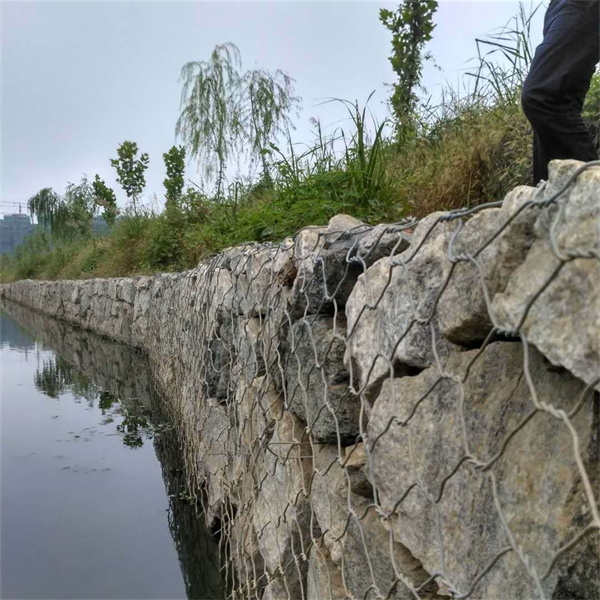Ιούλ . 23, 2024 14:34 Back to list
Custom Spiral Gabion Planters for Unique Garden Designs and Stylish Outdoor Spaces
Exploring the World of Spiral Gabion Planters A Comprehensive Guide
In recent years, the use of spiral gabion planters has gained popularity among landscape architects, gardeners, and DIY enthusiasts alike. These innovative structures not only serve a functional purpose but also add aesthetic value to any outdoor space. In this article, we will delve into the benefits of spiral gabion planters, the manufacturing process, and the various applications for these unique gardening solutions.
What Are Spiral Gabion Planters?
Spiral gabion planters are cylindrical or spiral-shaped containers made from hexagonal wire mesh filled with natural stones, gravel, or soil. The design allows for creative and effective gardening options, making them perfect for urban gardening, educational institutions, and eco-friendly landscaping projects. The planters are not just visually appealing; they also promote sustainable gardening by enabling efficient drainage and preventing soil erosion.
Benefits of Spiral Gabion Planters
1. Versatility One of the most significant advantages of spiral gabion planters is their versatility. They can be installed in various environments, whether it's a backyard, a rooftop garden, or public parks. Their spiral design allows for the cultivation of a diverse range of plants, including herbs, flowers, and small shrubs.
2. Eco-Friendliness Spiral gabion planters are made from natural stones and can be designed using recycled materials. This makes them an eco-friendly choice for environmentally conscious gardeners. Additionally, the gabions provide excellent drainage, reducing the risk of overwatering and promoting healthy root growth.
3. Aesthetic Appeal The unique spiral shape of these planters adds a modern touch to any landscape. They can serve as attractive focal points in gardens or landscaping projects, providing visual interest and enhancing the overall design.
4. Stability and Longevity The use of durable wire mesh and natural stones ensures that spiral gabion planters withstand the elements, offering longevity and stability. Unlike traditional planters that may deteriorate over time, gabion structures are built to last, making them a worthwhile investment.
Manufacturing Process
spiral gabion planter manufacturer

The manufacturing of spiral gabion planters involves several key steps
1. Material Selection High-quality hexagonal wire mesh is chosen to ensure durability and strength. The wire is often galvanized to prevent rust and corrosion, making it suitable for outdoor use.
2. Fabrication The wire mesh is cut and shaped into the desired spiral or cylindrical form. This process can be done using automated machinery or by skilled artisans, depending on the scale of production.
3. Filling Once the gabion structure is ready, it is filled with natural stones, gravel, or soil. This step is crucial to ensure the planter maintains its shape and stability. The filling material is chosen based on aesthetic preferences and the specific needs of the plants being cultivated.
4. Finishing Touches Finally, the gabion planters undergo a quality check to ensure they meet manufacturing standards. Any necessary adjustments are made, and the planters are packaged for distribution.
Applications of Spiral Gabion Planters
Spiral gabion planters have a wide range of applications. They are increasingly used in
- Urban gardening projects where space is limited. - Educational institutions to teach students about sustainable gardening practices. - Public parks and community gardens to enhance biodiversity and encourage green spaces. - Decorative landscaping in private residences.
Conclusion
Spiral gabion planters represent a harmonious blend of functionality and aesthetics in modern gardening. Their versatility, eco-friendliness, and durability make them an excellent choice for various applications, while their unique design adds character to any outdoor space. As interest in sustainable gardening continues to grow, spiral gabion planters are sure to become an integral part of our green landscapes. If you're considering adding a touch of elegance and practicality to your garden, exploring gabion planters may just be the answer.
-
HESCO Gabion Baskets for Coastal Erosion Prevention
NewsAug.22,2025
-
Longevity and Durability of River Rock Gabion Walls
NewsAug.22,2025
-
How to Integrate Gabion 3D Walls in Urban Planning
NewsAug.22,2025
-
Reno Mattress Gabion Applications in Civil Engineering
NewsAug.22,2025
-
How to Install Wire Mesh for Gabion Baskets Properly
NewsAug.22,2025
-
Best Materials for Filling a Chain Link Gabion
NewsAug.22,2025
-
Wire Mesh Thickness Impact on Gabion Wall Load Bearing
NewsAug.12,2025






